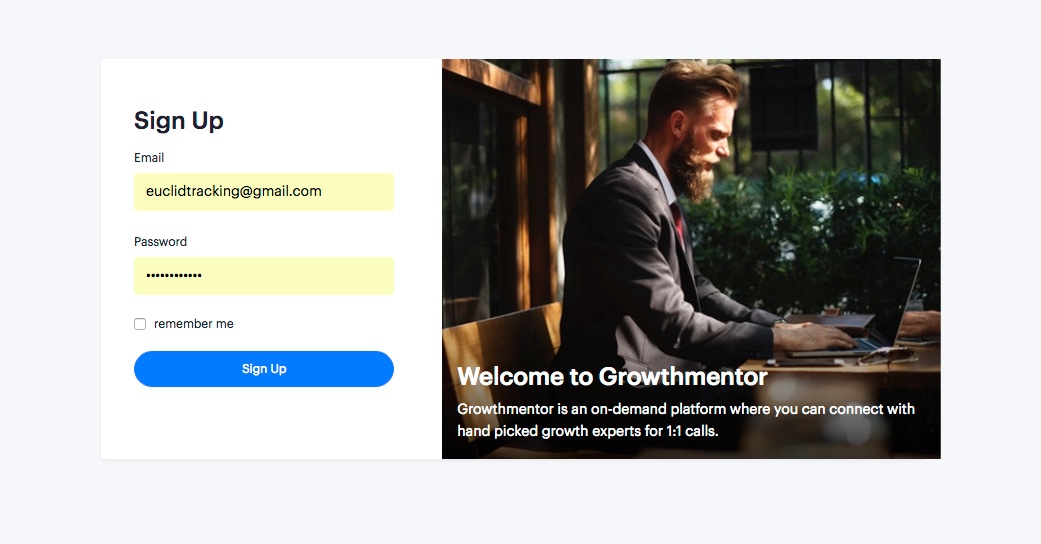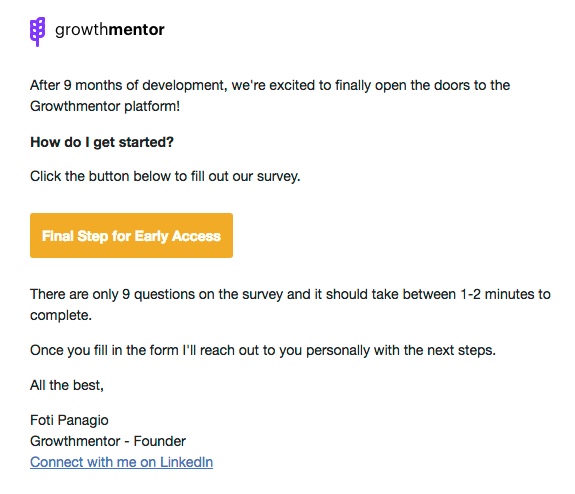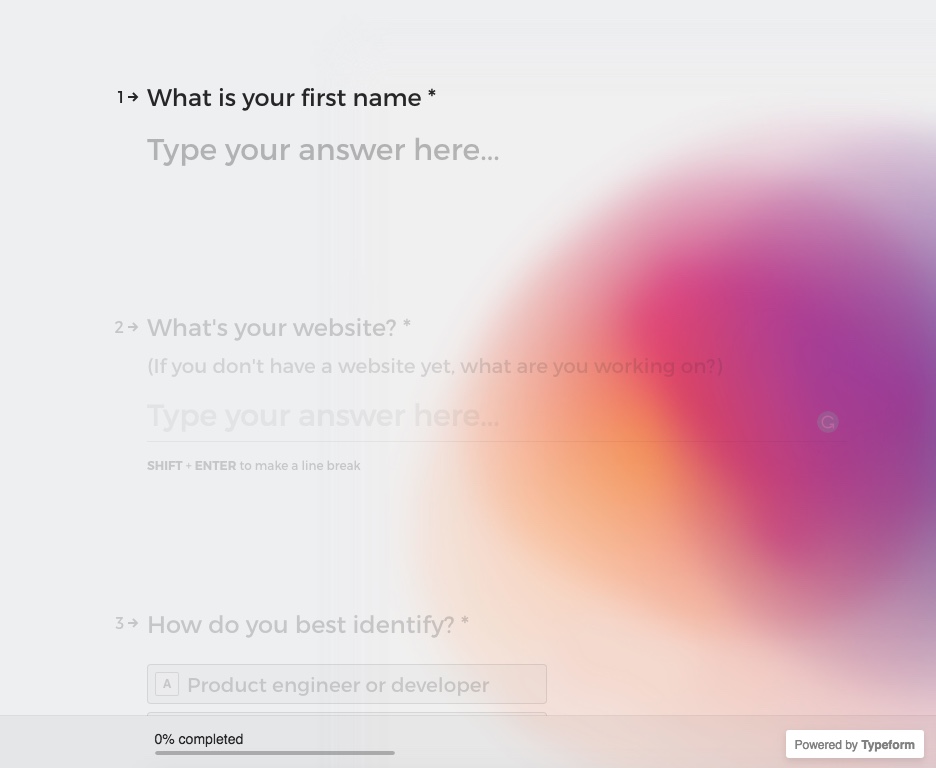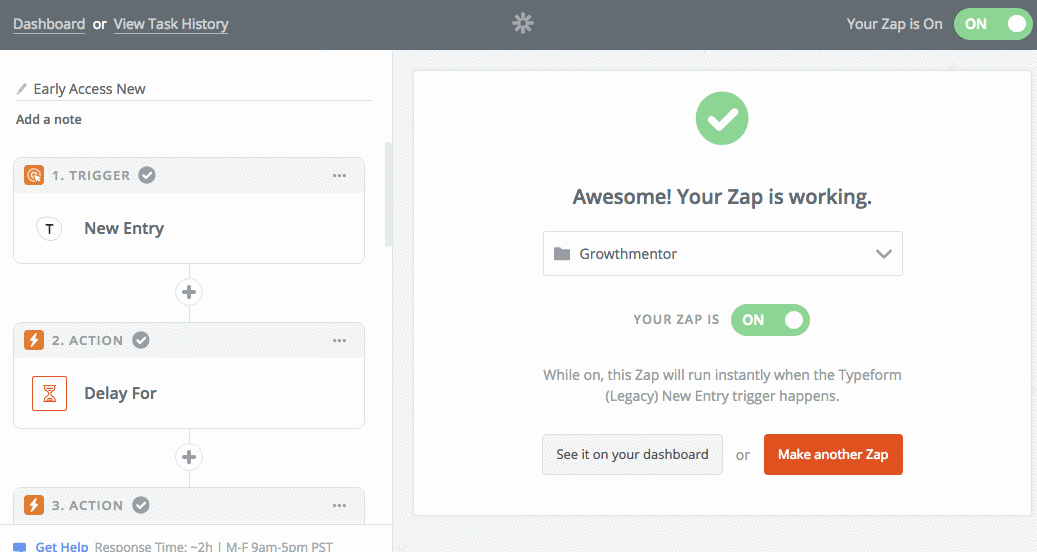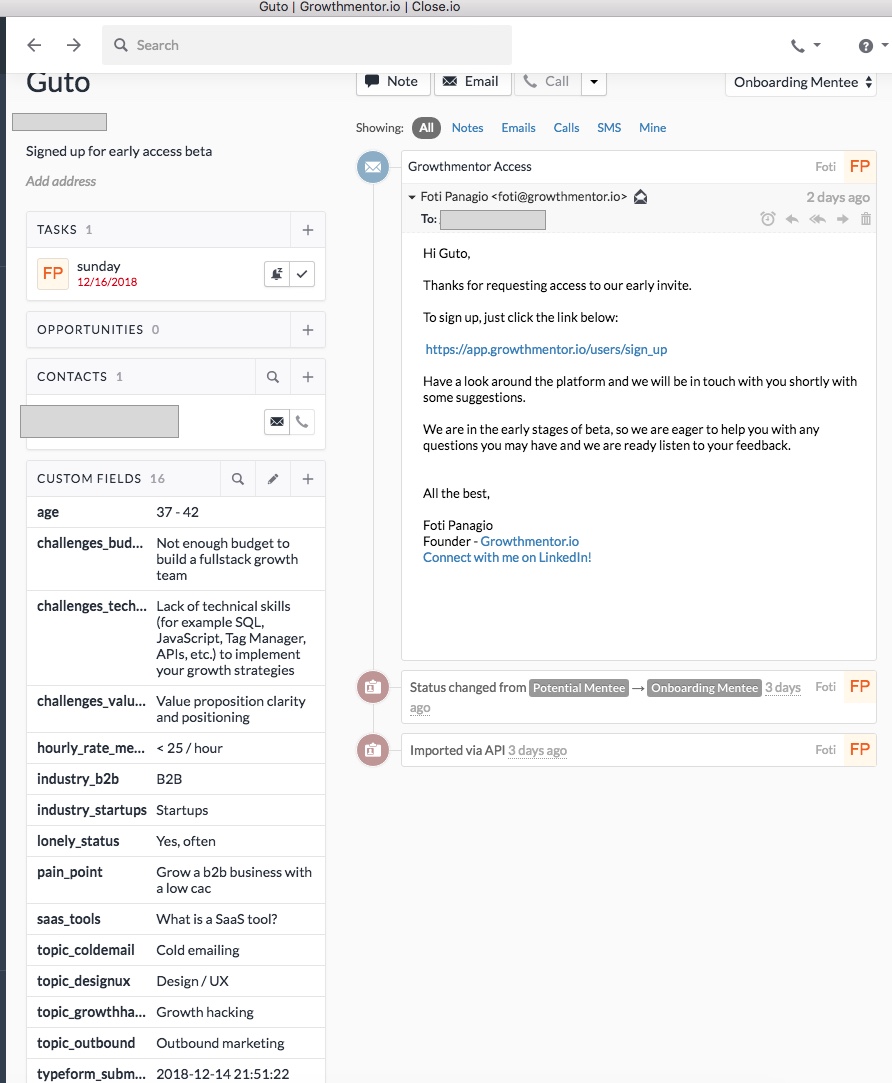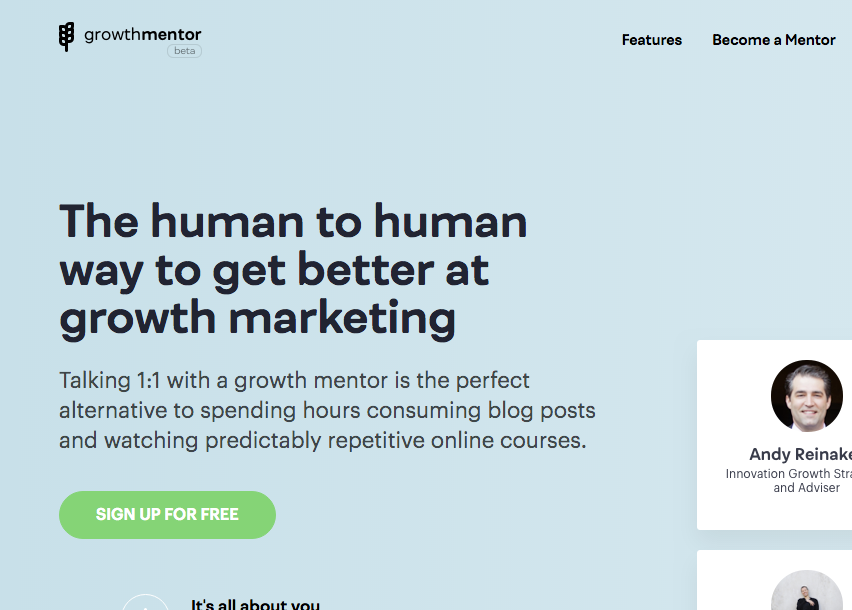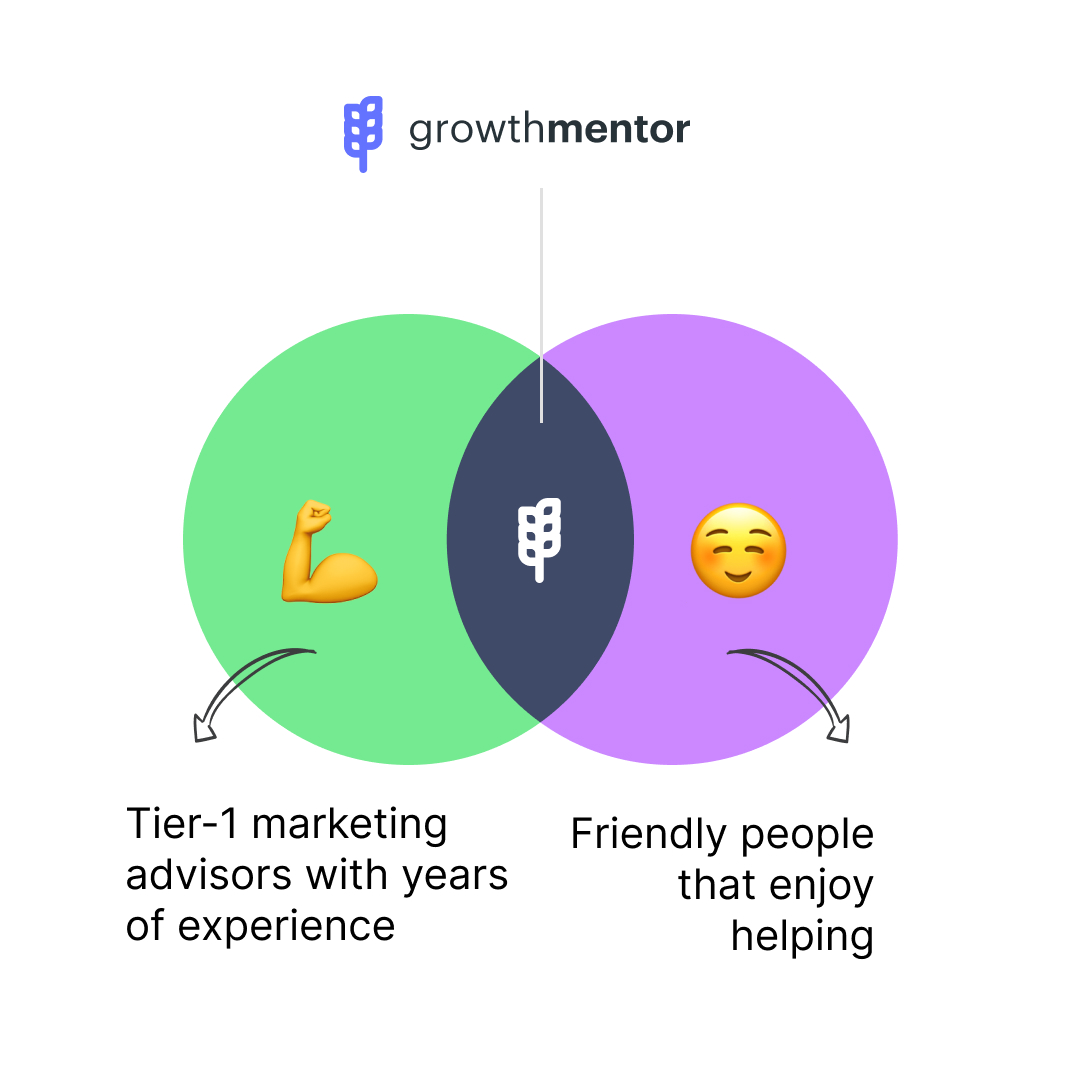Why Adding Friction to Your Onboarding Funnel Can Actually be Good Idea [Case Study]
Growthmentor is a 2-sided marketplace that comes with all the typical challenges of chicken vs. egg.
When we launched BETA back in early September 2018, we were initially super stoked to see a top of the funnel conversion rate of more than 25%.

But there was a pretty big problem.
- Users weren’t engaging on the platform
- We knew nothing about these users besides their email address
- Users were not responding to email marketing automation either
Literally, all they had to do was put an email address in and they got instant access to the platform.
We didn’t even have a captcha setup…
We were filling up with zombie accounts.
Acquisition was kind of easy but activation wasn’t.
Since we had an artificially high conversion rate we had no problem sacrificing some of it in pursuit of more qualified users.
But most of all, we wanted data.
We wanted needed to learn more about the motivations of our early-stage users.
The quickest fix was to jimmy rig together a new onboarding process using off the shelf SaaS tools to profile all early-stage users.
This is exactly how we did it:
How we added friction to user onboarding
Step 1: First we created the illusion of super easy access by asking for just email at the top of the funnel.
This kept our top of funnel conversion rate stable at around the 18-20%.
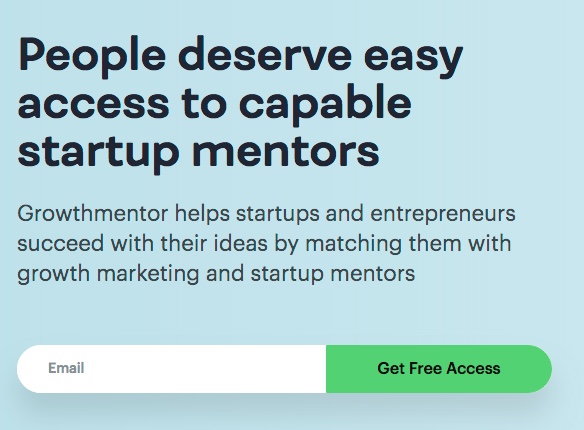
We used a simple .html embedded Drip form.
Step 2: After sign up at the top of the funnel they then get sent an automated email.
This gives them the surprise news that actually, they’re going to have to jump through a hoop and maybe even do a dance for us before they get access to the platform.
Step 3: Upon clicking the CTA on the email, they’d be directed to a Typeform. (aka the swiss army knife of the form world).
Filling in the Typeform would take around 3-4 minutes to do it properly.
Not a huge amount of time, but still enough time that it would weed off anyone who wasn’t serious about checking it out.
The Typeform had a 70% click-through to completion rate.
Click here to see the exact Typeform we used during this phase.
Step 4: 31% of top-of-funnel sign-ups submitted the Typeform and reached this step.
This step is the easiest since it was all automated. So in all fairness, this might not really even classify as a “step.”
I’m only putting this step here because I’m an automation geek, and am sure that there are others out there too.
Typeform submissions would trigger the following Zapier automation sequence:
- First events would get trigged and custom fields would be updated in our email CRM, Drip. This resulted in an automated email letting them know we got their submission and to hold tight.
- Then the Typeform data would be appended to the leads’ custom fields within Close.io, our CRM of choice
- Results would then be pushed into Google Sheets where we aggregate the data and derive insights from the stats
- Finally, we would then get a Slack notification with the data and a note to jump into Close.io and reach out with a 100% personalized onboarding sequence.
Below’s a .gif of the Zap:
Step 5: This is the “hustle” step.
I’d manually send an invite to each and follow up 1:1 based on the data they gave me in the Typeform.
We got such rich data from the onboarding surveys so I’d personally reply back to each user 1:1 and try and match them with the perfect mentor based on their data.
This drastically increased our activation rate.
Shout out to Benji Hyam for coaching me to really double down at this stage and not be lazy.
Step 6: The final step was to sign up.
Since I had hidden the direct “signup” link from the top nav of the website AND the app, it was impossible for visitors to sign up unless they had the direct link to the signup page.
Only after they went through steps 1-5 would they get that link.
There was quite a bit of drop off at this stage which surprised since they’d already gone through the hassle to fill in the Typeform.
Effects on Conversion Rate
The day we implemented this new friction-loaded onboarding process our conversion rate fell by over 80%.
Yes!
This sign up process was disjointed, annoying, and completely hacked together, but it worked in providing us with the critical data we needed to better understand our user base.
And yes, onboarding dozens of new users per week 1:1 does not scale really well. It’s hugely time-consuming and you’re constantly having to context switch making it almost impossible to do deep work.
But…
Because as Paul Graham states, when you’re still fighting to figure out product-market fit and have more time than money, you should do things that don’t scale (and do them amazingly well if possible).
We ran like this from October 4th till December 20th.
328 signups, manually onboarded, one-at-a-time. And in the process we had many awesome conversations with our users and collected thousands of data points. This ultimately gave us a much clearer idea of the cohorts that can get the most value out of Growthmentor and those that cannot. Who wins? Everyone.
We now know things like:
- What role do most users have?
- What industry are they in?
- What is their age?
- What are their largest challenges in growing their startup?
- What topics do they want to talk to a growth mentor about?
- How many SaaS tools do they use in their marketing stack?
- How much ROI are they deriving from that SaaS stack?
- Do they ever get feelings of loneliness?
- Do they really even want a growth mentor?
- How much are they willing to pay for one?
Here’s the takeaway from the data:
- Growth is multivariate dependent
- Growth is trial and error driven
- Growth is really really hard
People need more help and advice then they lead others on to believe they need and are craving for a “safe place” where they could turn to and just be like …
But that’s a topic for another discussion.
How we’re doing onboarding now
Last week we decided we had enough data. We also realized that onboarding was really starting to burn us out.
It was time to remove the friction from user onboarding.
We’re still going to be chasing data, but we’ll be doing it in less obtrusive ways via progressive profiling AFTER users sign up.
New onboarding process:
Step 1: Click sign up call to action.
Contrary to the previous onboarding process we’ve made it very hard to miss!
Step 2: Simple signup form with a minimal amount of profiling included.
We just ask for role and industry.
We also added a reCAPTCHA and conversion boosting badges, unique selling points, logos, and testimonials.

That’s it!
Final Takeaway
It has never been easier to get to market with your product and launch startups. But along with the obvious benefits of reduced costs and speed to market, there is the counter-balance of hyper-competition. You’re not the only one living in a world where it’s super easy to launch a startup, buddy.
So if you really want to break through the noise, you’ve got to truly understand your industry, your users, their pain points, and their motivations. This is a lot harder than it sounds and takes shit loads of work that most people don’t really have the patience for. That means those that do have the patience for it will have a major competitive advantage.
Know your customers or they wont take the time to you know you!
